Lightship L1 is a futuristic, all-electric new take on the recreational vehicle
The ground-up design of the Lightship L1 aims to change travel trailers for ever, adding an electric powertrain and an expandable, modernist interior
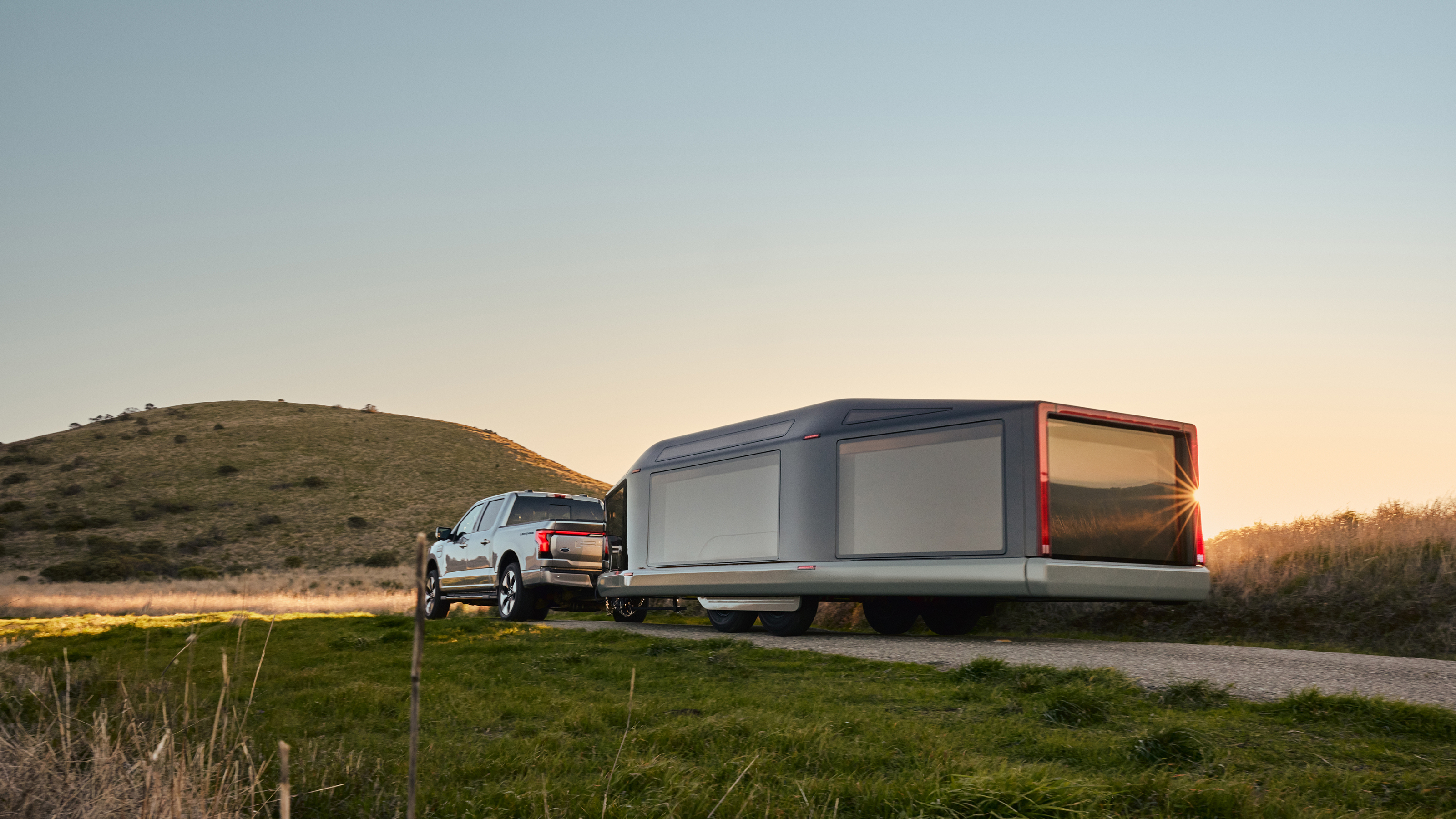
Describing your debut project as the ‘first purpose-built all-electric RV’ is a bold statement, especially as one of the definitions of a travel trailer (or caravan, for our British readers) is that it isn’t powered, it is pulled. Nonetheless, the Lightship L1 does come with a self-propulsion system, one that brings a canny advantage for drivers using an EV to haul it.
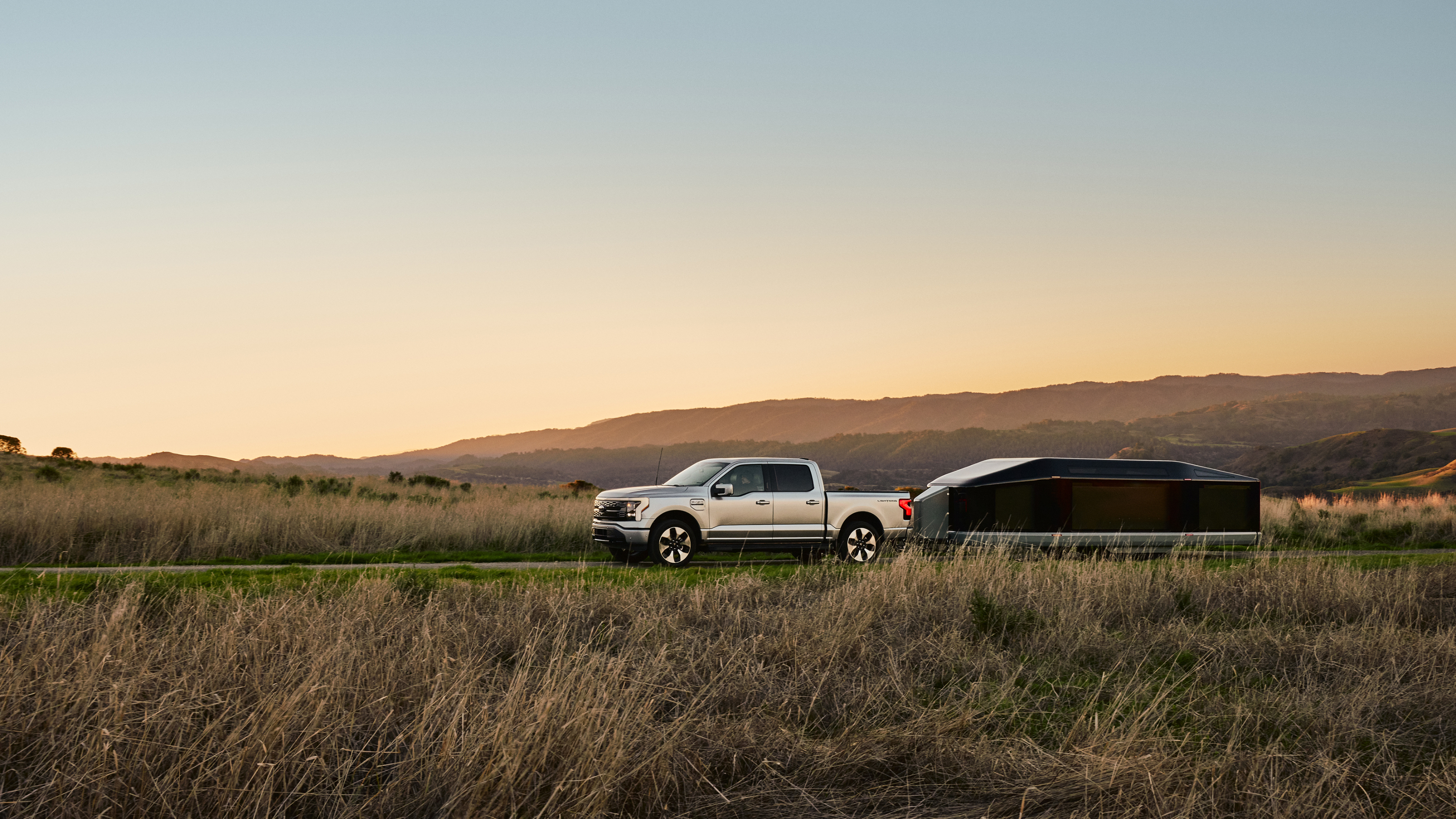
Lightship is a start-up with an impeccable pedigree. Co-founders Toby Kraus and Ben Parker are both Tesla alumni, working on the Model 3 and Model S. Both keen campers and road-trippers, they sought a solution for one of the biggest downsides in using an EV as a tow vehicle, the decimation of the available range.
Lightship L1, evolving the travel trailer
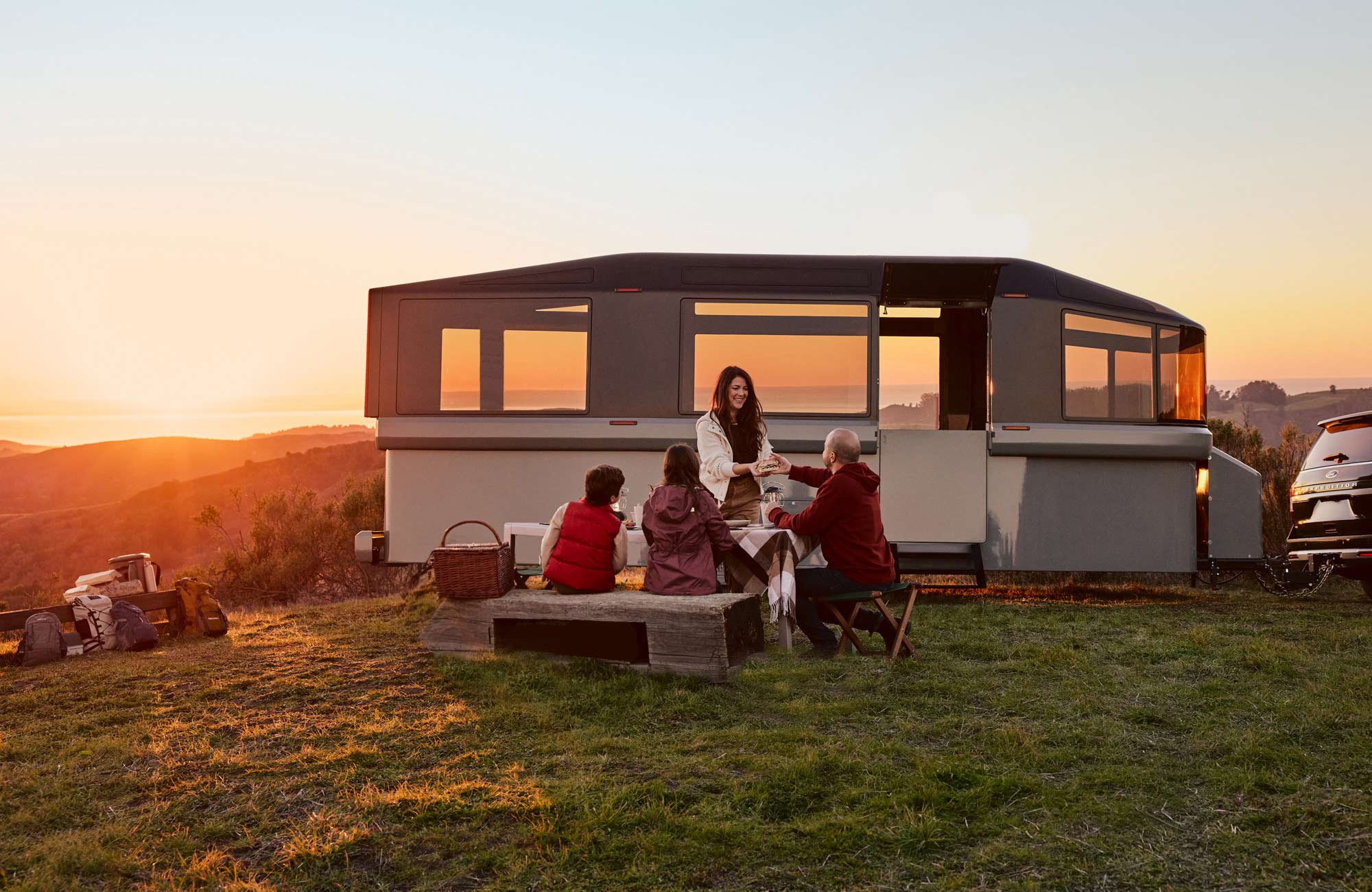
The Lightship solves this problem in two ways. For a start, it’s ultra-aerodynamic, with an expanding roofline that allows the trailer to be just 6ft 9in high when in ‘Road Mode’. Once you’ve parked up, the rooftop expands to a lofty 10ft.
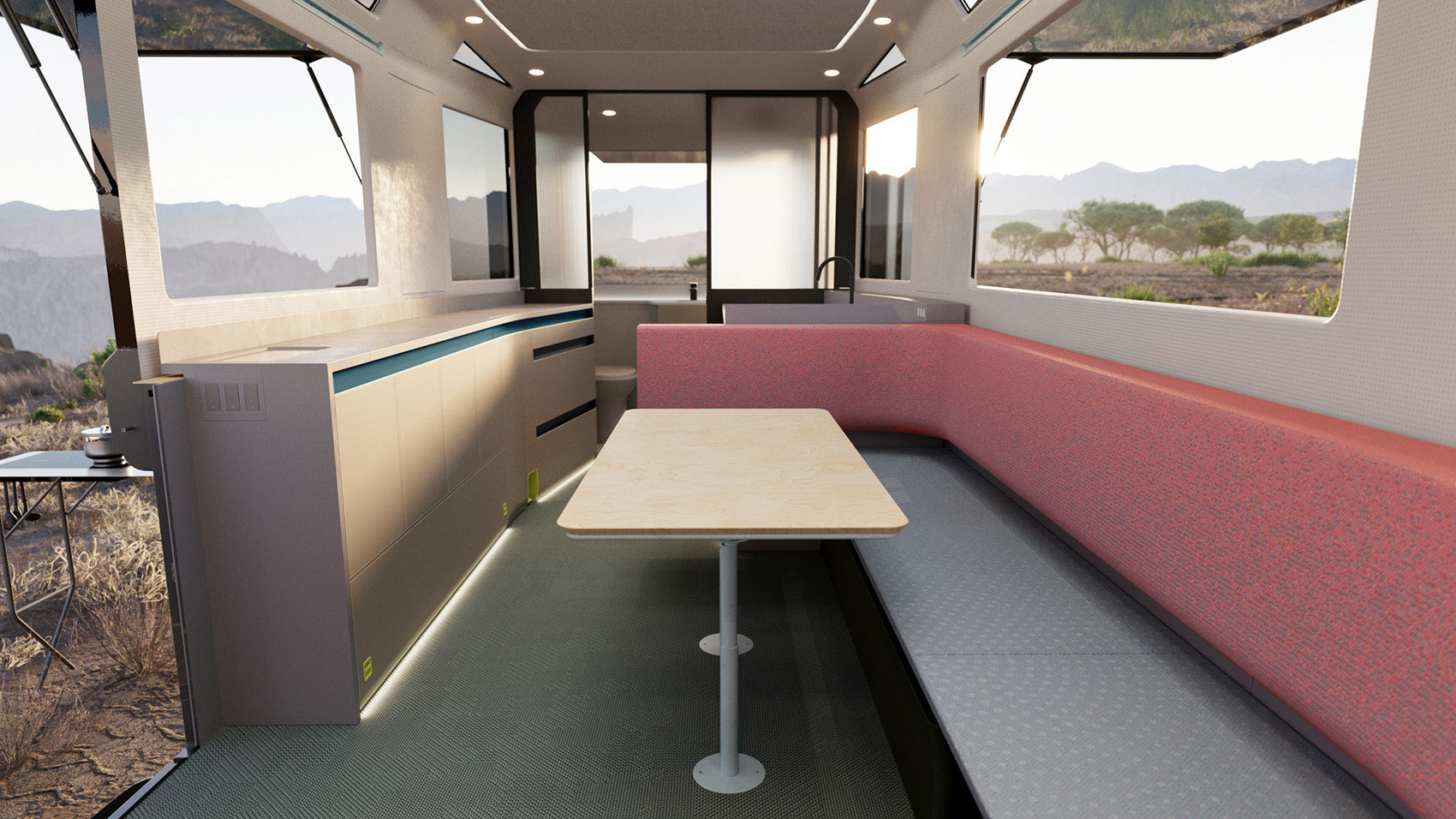
The second solution was the Lightship’s onboard electric powertrain. Combining 80 KwH of battery with in-wheel motors effectively allows the trailer to propel itself, ensuring that there’s no loss of range for the towing vehicle, or no drip in fuel consumption if you’re still using an ICE machine.
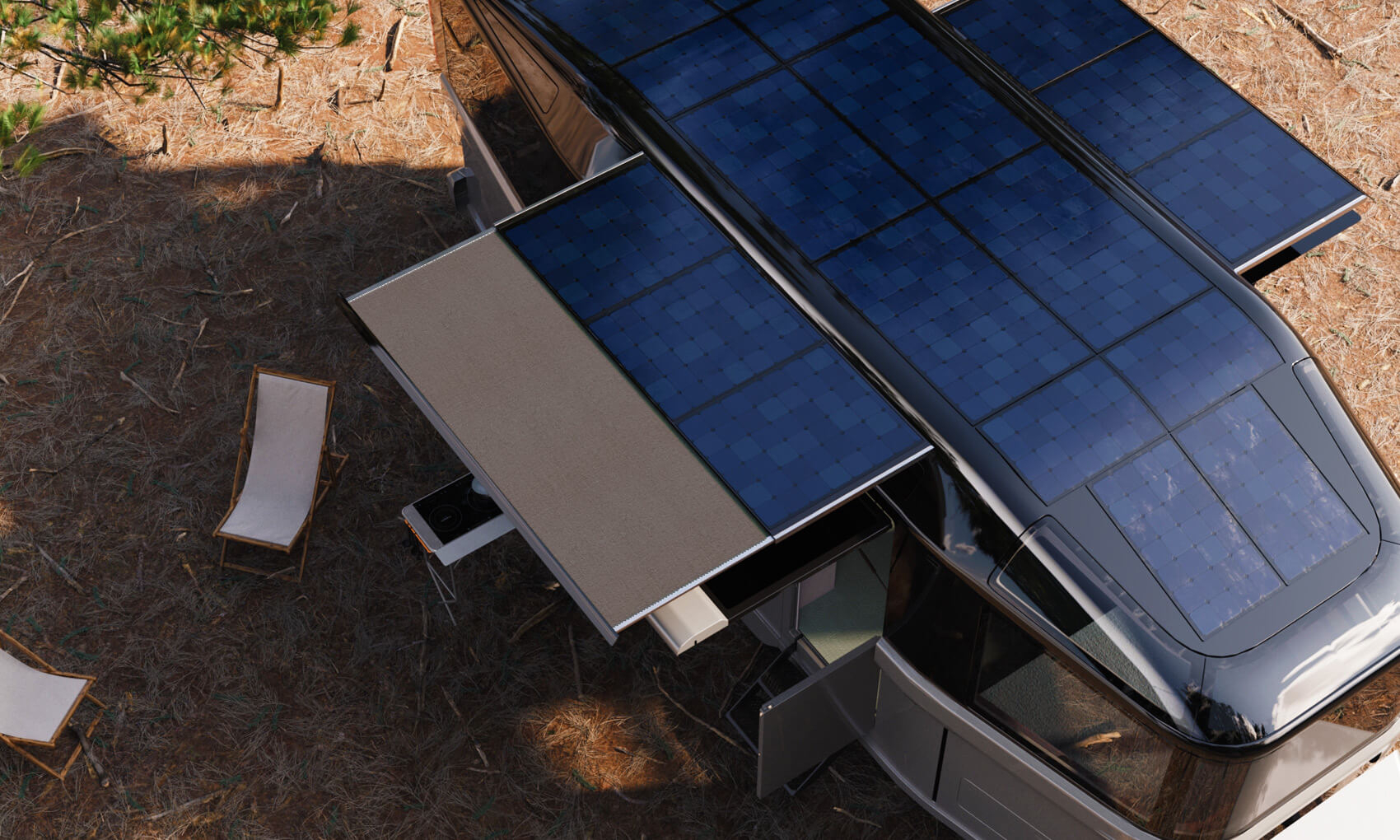
This battery system also gives the L1 excellent off-grid abilities. Capable of giving the occupants up to a week’s worth of power without a charge, the batteries are supplement by a rooftop’s worth of solar, up to 3kW. Fold-out awnings provide space for more panels, meaning there’s no need for noisy generators or unwieldy gas tanks.
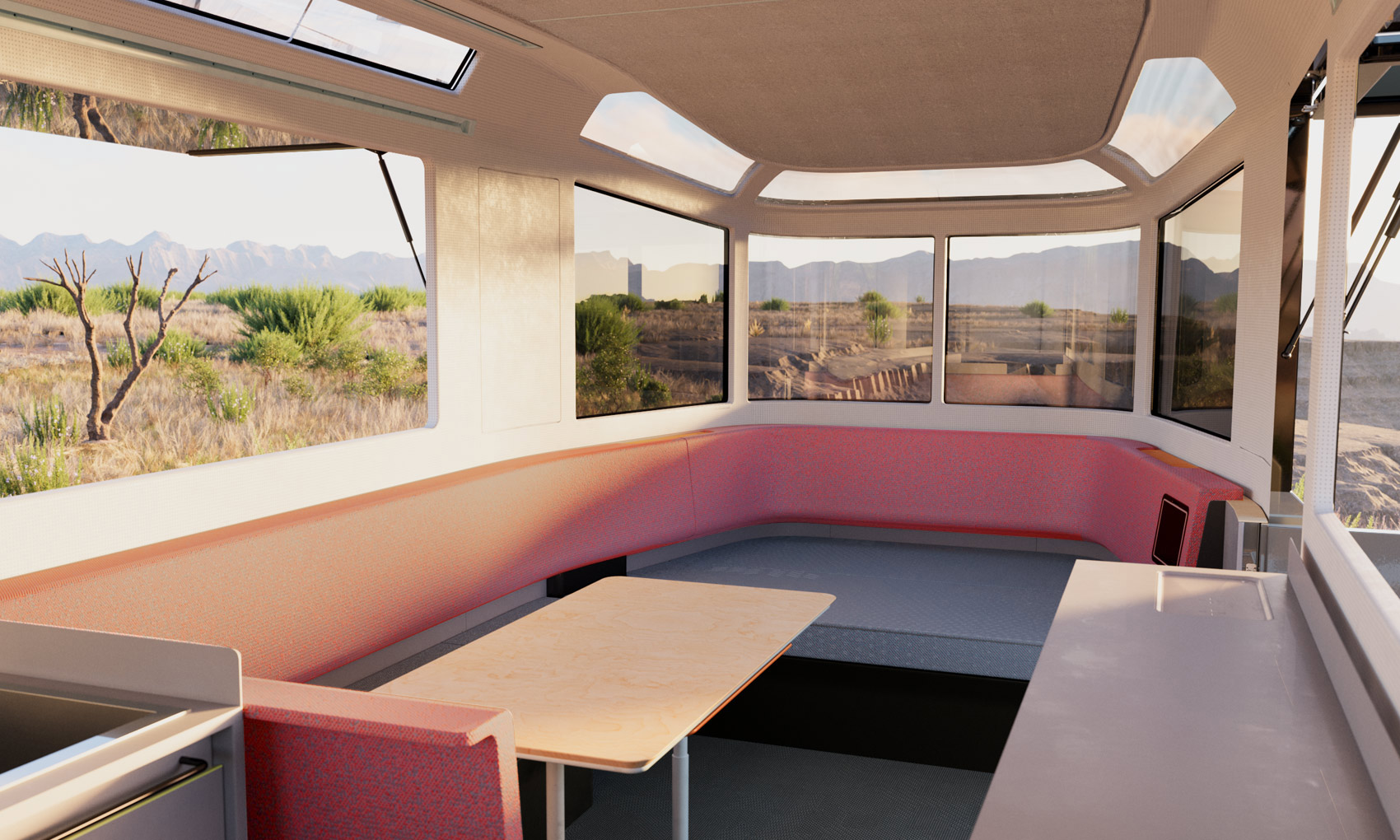
Inside, roof up, there’s space for between four and six people to sleep, depending on configuration. All appliances are electric, and the interior ambience is airy, spacious and loft-like, with wraparound windows and quarter lights bringing light in from all angles.
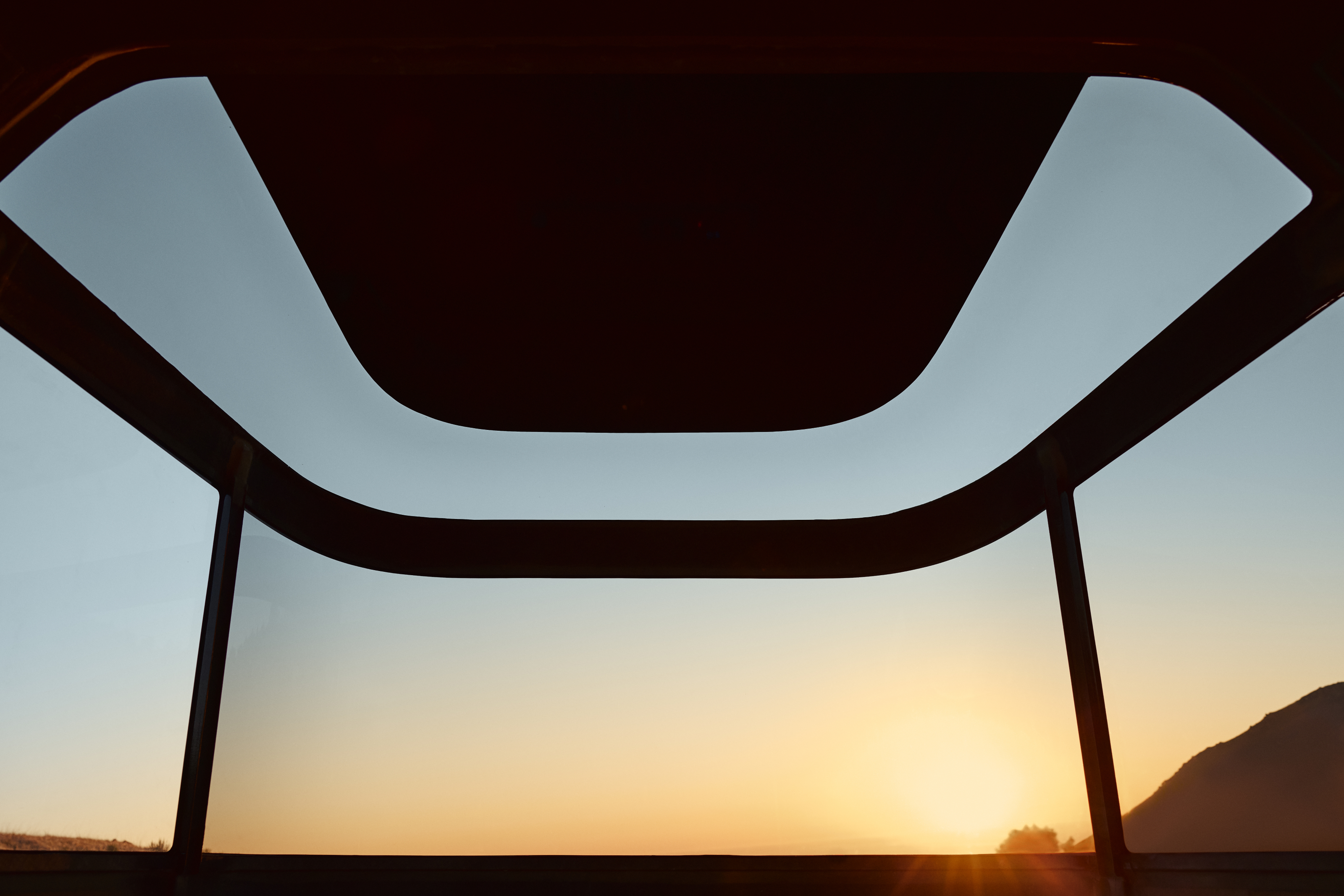
It bears a passing resemblance to Buckminster Fuller’s Dymaxion House, as well as looking distinctly more domestic than most conventional trailers when it’s parked up and expanded.
Wallpaper* Newsletter
Receive our daily digest of inspiration, escapism and design stories from around the world direct to your inbox.
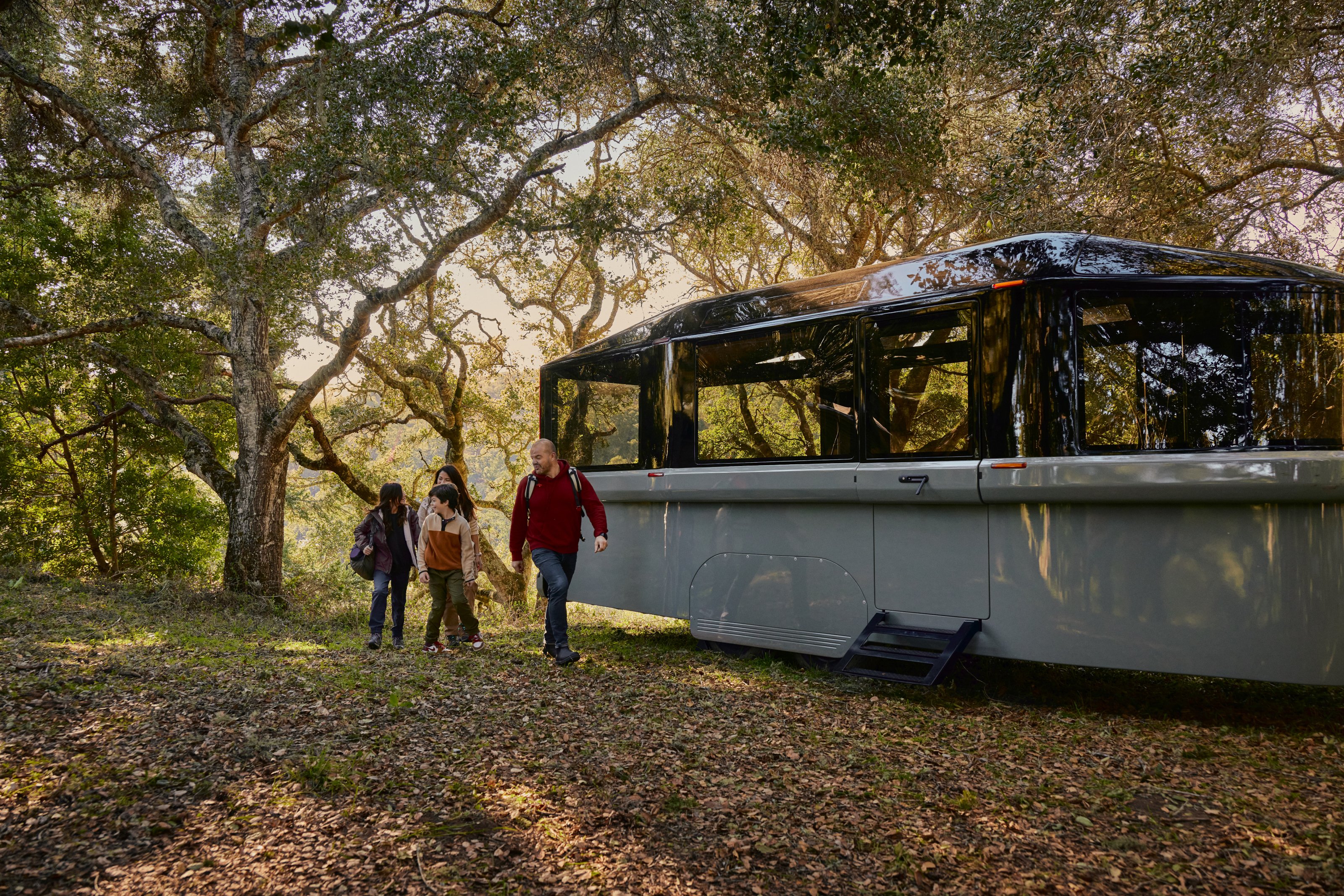
At 27ft long and 8.5ftwide (8.2 x 2.6m), the L1 is wider and longer than the average caravans used in Europe, as well as being too long to be legally towed by a regular car (in the UK at least). It’ll probably fall foul of some European legislation as well. But that’s by the by – this is an all-American machine designed in the spirit of adventure and the freedom to roam the country’s interstates, by-ways and national parks.
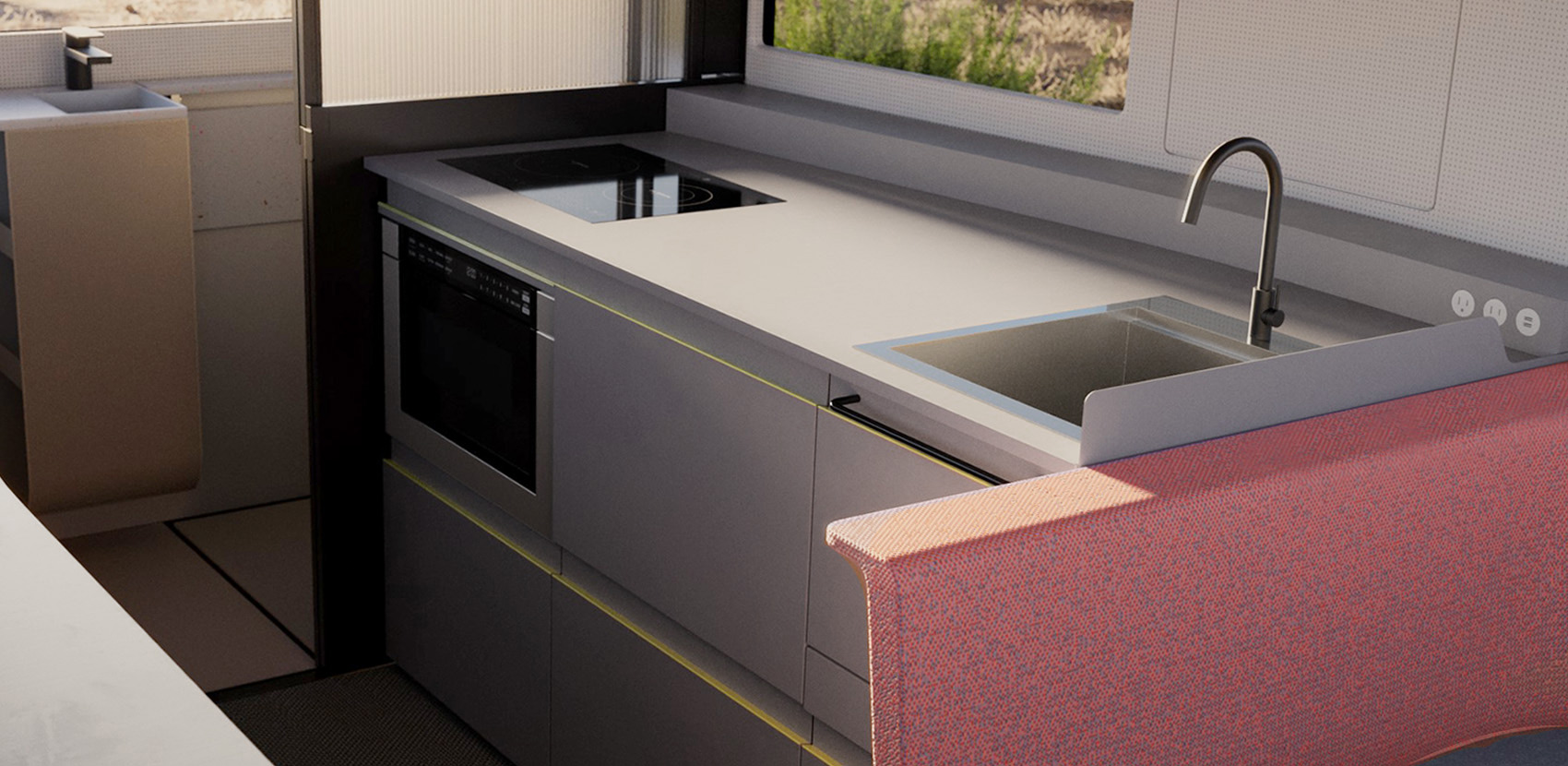
The company, which is based in San Francisco and Boulder, Colorado, acknowledges that it is still quite early days for the L1. An RV revolution is certainly needed – one in ten Americans owns an RV of some kind – and electrification offers a fresh approach that no one else is tackling. Let’s hope the Lightship L1 sets sail successfully to make camping cleaner, quieter and a good deal more comfortable.
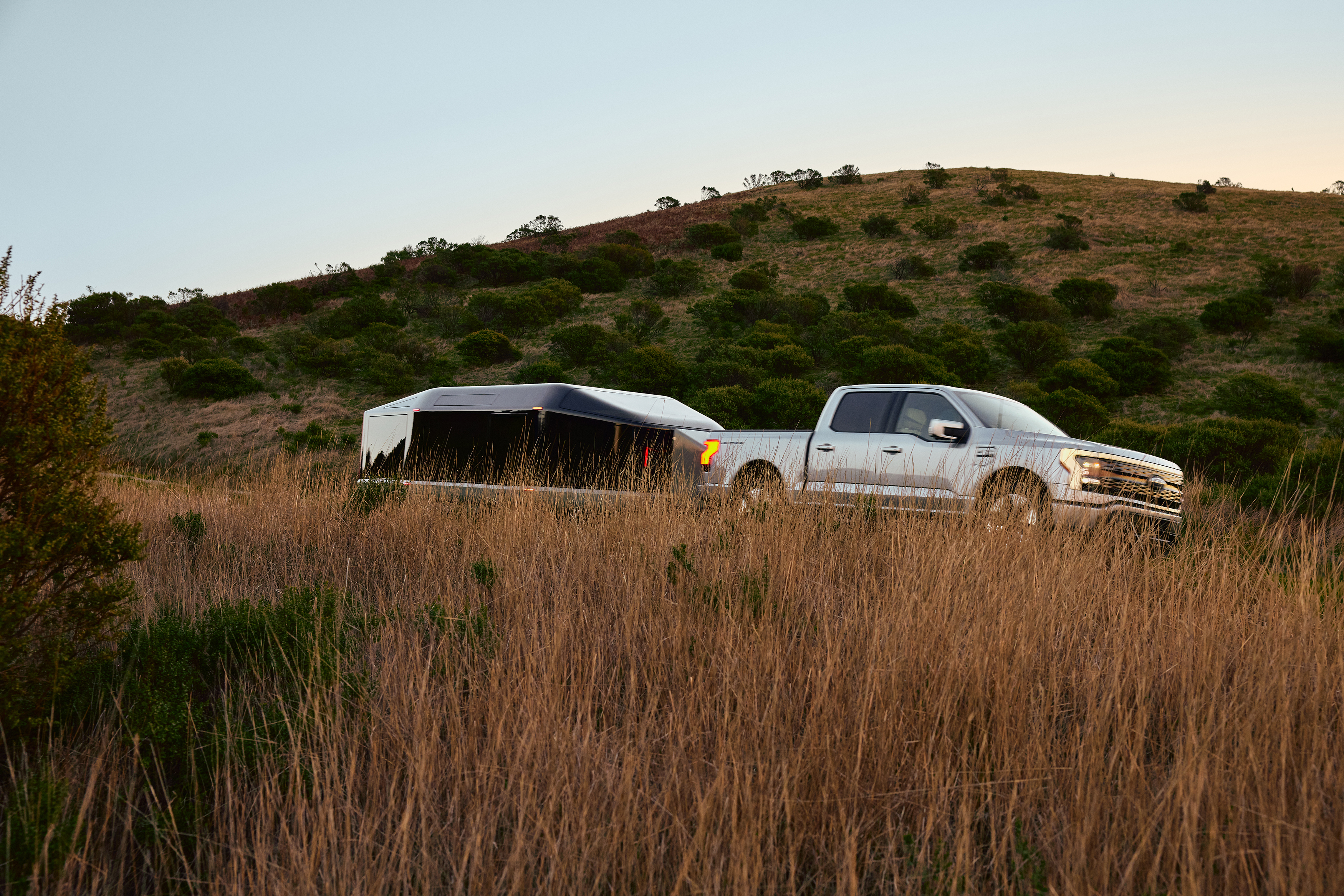
Lightship L1, from $125,000, available late 2024, LightshipRV.com
Jonathan Bell has written for Wallpaper* magazine since 1999, covering everything from architecture and transport design to books, tech and graphic design. He is now the magazine’s Transport and Technology Editor. Jonathan has written and edited 15 books, including Concept Car Design, 21st Century House, and The New Modern House. He is also the host of Wallpaper’s first podcast.
-
 All-In is the Paris-based label making full-force fashion for main character dressing
All-In is the Paris-based label making full-force fashion for main character dressingPart of our monthly Uprising series, Wallpaper* meets Benjamin Barron and Bror August Vestbø of All-In, the LVMH Prize-nominated label which bases its collections on a riotous cast of characters – real and imagined
By Orla Brennan
-
 Maserati joins forces with Giorgetti for a turbo-charged relationship
Maserati joins forces with Giorgetti for a turbo-charged relationshipAnnouncing their marriage during Milan Design Week, the brands unveiled a collection, a car and a long term commitment
By Hugo Macdonald
-
 Through an innovative new training program, Poltrona Frau aims to safeguard Italian craft
Through an innovative new training program, Poltrona Frau aims to safeguard Italian craftThe heritage furniture manufacturer is training a new generation of leather artisans
By Cristina Kiran Piotti